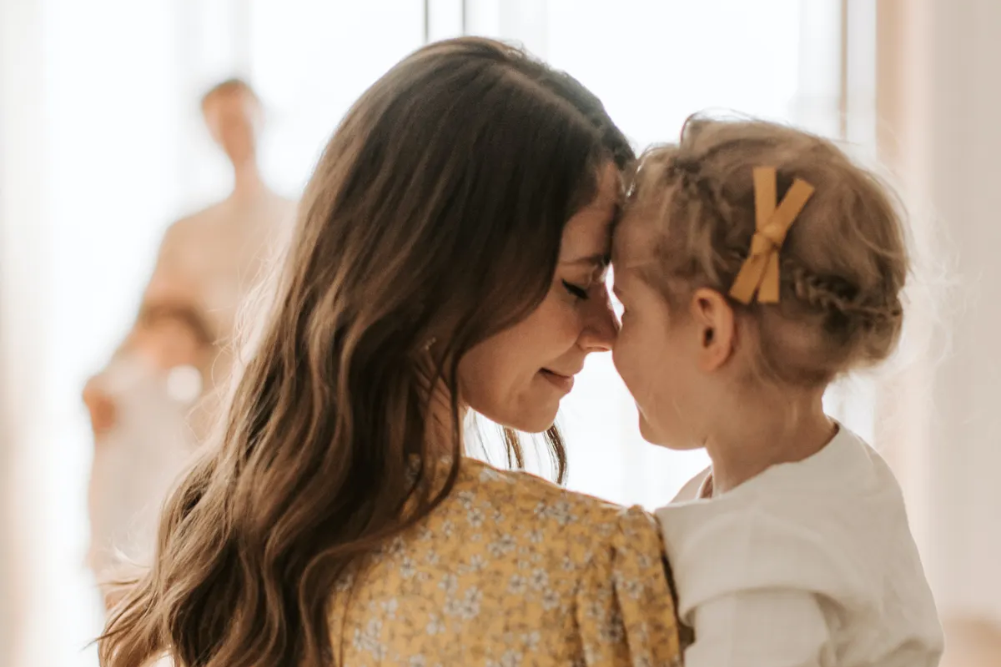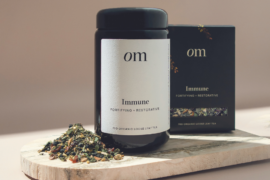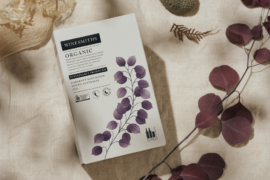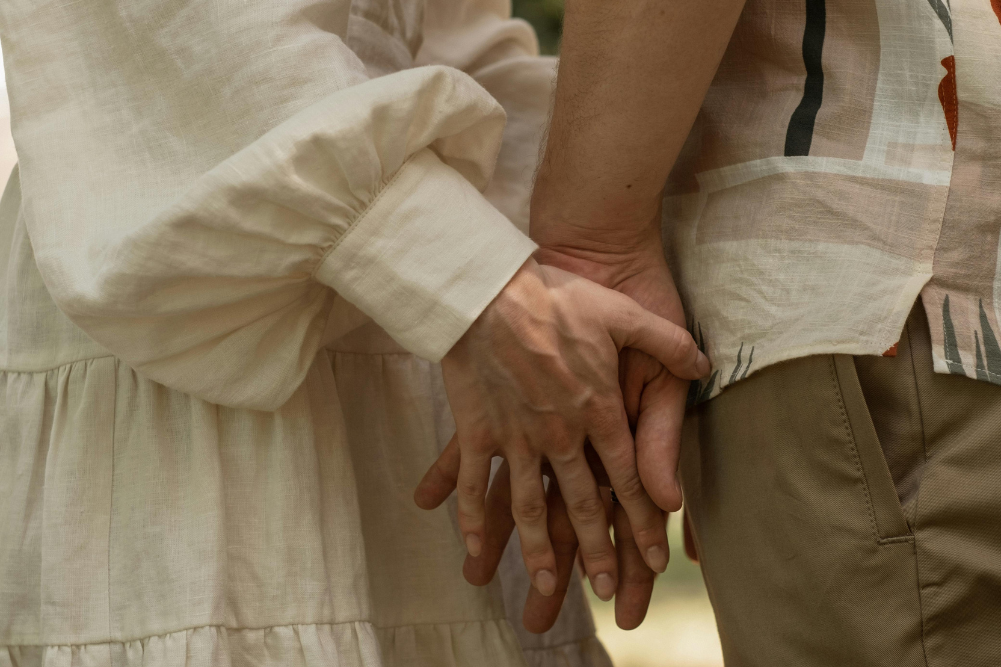Healing Ancestral Wounds
Echoing into the future to affect subsequent generations, our ancestors’ lives shape us in insidious ways. Here, we explore how to heal our ancestral wounds.
The sins of the fathers are visited on their descendants for many generations, or so the Bible claims. What is certain is that whether we’re aware of it or not, each of us is deeply affected by the lives of our ancestors and the choices they made. It’s a concept most therapists and geneticists understand well and one particularly core to ancestral healers such as Terry and Natalia O’Sullivan, authors of Ancestral Healing Made Easy (recently published by Hay House). The UK-based couple co-run workshops and retreats with the aim of helping people tap into their ancestry and uncover and heal matters arising from their lineage.
What is ancestral healing and why does it matter?
Terry, also a spiritual medium and sangoma shaman (initiated in the tribal African tradition), describes ancestral healing as the process of working on your problems and improving your life through an understanding and exploration of your ancestry and what is handed down to you. “Unless we explore the stories of who our ancestors are, we don’t know fully what makes us tick,” he explains. “And you can’t heal an issue unless you get to the root cause.”
Your ancestral inheritance
There’s the obvious, like our DNA, physical appearance, health, talents and personality. But our ancestors can hand down much more: beliefs, behaviours, communication, interpersonal and money-management styles, disadvantages, family stories, rules and traditions. In a 25-year study, for instance, children born to World War II survivors of the Dutch Hunger Winter were more prone in adulthood to type II diabetes, heart disease and other health problems. In another example, from 2024 research, women’s reports of closeness or tension with their mothers and fathers tended to predict how close or tense they were with their own adult children.
Intergenerational trauma
Intergenerational trauma occurs when the impacts of trauma are passed down the generations, creating an ongoing cycle of ill effects – such as mental health problems and maladaptive behaviours. Terry says a lot of inherited ancestral trauma has its origin in war and the widespread displacement of people from their roots by European empires. Other common causes include oppression, premature deaths, car accidents, serious injury, life-threatening health issues, crime, violence, sexual assault, abuse and natural disasters.
How the past manifests in us
Studies show, for example, that the children of trauma victims are more vulnerable to mental health issues than people without such histories. According to the O’Sullivans’ book, ancestor-related issues can affect us on many levels – the biological, psychological, emotional and spiritual. They can manifest, for instance, as ill health, hyper-vigilance, low self-esteem and dysfunctional behaviours such as replaying wounded roles with partners. At the same time, the writers stress the importance of realising that our ancestor’s influence is not all negative. Even those with a troubled ancestry may, for instance, inherit various life skills, talents, virtues and strengths.
Healing a negative legacy
For those of us wounded by an ancestral legacy, what can we do? While we can’t change the past and inherited problems can feel unfair, there’s a lot we can do to turn things around. Healing the past is ultimately about reinvention and making change, Terry says. Here’s what the couple suggest.
Dig up and explore the past
Start with exploring and researching your heritage. This is about collecting facts. Make use of ancestry databases, census records, official documents such as birth and death certificates, DNA testing and more. Apps, charts and tables can be useful for putting together your family tree. Things to note include ethnicity, cultural and religious influences, health, education, work histories, financial status, family secrets, talents, achievements, family tragedies, criminal behaviour, challenges of the time and personality traits and behaviours.
Is there a pattern? What qualities of our ancestors might be helpful to us? What do we want to change? What do we need to heal? “We are the carriers of what we came from,” Terry says.
Build connection
In Ancestral Healing Made Easy, the O’Sullivans= emphasise the importance of family traditions and feeling part of a clan to our sense of security, wellbeing, belonging and continuum. In modern Western cultures, we tend to live separate from our ancestors. However, in traditional Indigenous cultures, forebears tend to be revered and consulted for guidance. In this way, they continue to play a part in people’s lives, Terry says.
Terry believes it’s important to honour our ancestors that have passed on. “Without them, we don’t exist,” he says. It’s also acknowledging that our connection to them endures. “It depends on what you believe in,” he says. “I subscribe to Tibetan Buddhism. The Dalai Lama says that everything is interconnected. Everything and everyone is on its own journey.” Terry believes that, collectively, we’re responsible for the karmic cycles of the world and need to help each other grow spiritually.
Create ritual and symbolism
Connection to dead ancestors can be built through dedicating a space or regular ritual for them. The O’Sullivans suggest creating family alters, ancestral shrines, photographs and other emblems associated with our ancestors, as well as performing ceremonies and rituals like lighting incense, fires or candles or saying prayers requesting healing. This, they say, also facilitates the transition of our ancestors into the spirit world.
Ritual is equally helpful in building connection with living family members. We can, for instance, create regular celebrations or host a healing ceremony. Whether alone or with other family members, there are many creative ways we can facilitate healing, including writing, music, art and other tools. The key is to have clarity and intention around what we wish to achieve.
Cultivate acceptance, forgiveness and compassion
Although it can be hard, acceptance is key to the healing process. “Compassion and forgiveness can prevent a repeat of the same cycles of dysfunctional behaviour,” the O’Sullivans say in Ancestral Healing Made Easy. It can also release us from emotional pain. “Every time you cannot forgive someone, it keeps you connected with that person,” they write.
What can help this process, Terry says, is respecting that our ancestors were born into circumstances we cannot know. “It’s easy to point the finger and judge, but if you take time to realise why a person is that way, you will come up with a different story that is closer to the truth.” This doesn’t mean overlooking or minimising harmful behaviours. Being honest with ourselves is self-honouring and helps us gain clarity over what we need to heal.
To cut ties or not?
Sometimes there’s a case for cutting ties with family members, Terry says. This might be necessary, for instance, when we’re experiencing abuse, judgement, control or not being accepted or supported to be ourselves. Alternatively, we may want to set boundaries.
As Terry points out, for positive change to occur in our family dynamic, it’s necessary for people to want to change. Unfortunately, this doesn’t always happen. Regardless, we can still find healing for ourselves by accepting what we can’t change, and by honouring ourselves and our need to heal and forge our own path. While we can’t change others, we can still change ourselves.
Change a negative family pattern
Examples of dysfunctional and damaging family patterns include substance abuse, violence, guilting or stonewalling, emotional detachment, excessive criticism, people pleasing, victim playing and working excessively. Each family is unique.
According to Terry, change begins in recognising we want to be different and identifying the negative behaviour we want to change. Even small steps towards change can make a profound difference. For example, if your family have a tendency to look on the negative side of life, start expressing gratitude. “Every time you change or release a negative family pattern, you create a new identity. This new sense of self will in turn change the current dynamics of your relationships,” the O’Sullivans write in Ancestral Healing Made Easy.
Enlist helpers and healers
Having said that, it’s often challenging to change and easy to be drawn back into the same old family roles and dynamics. Family members may resist our efforts as changing our behaviour can make us feel like a stranger to them. Transforming ourselves can literally feel like being reborn, with all the growth, pain and joy that entails.
According to the O’Sullivans, it can be valuable at this time to have space from family to find and nurture our own identity and behaviour without them. A therapist and, if family members are interested, family therapy, can help support the process. Various healing professionals and practices are also beneficial in helping us heal ancestral wounding.
Healing practices
Dietitian, wellness coach and founder of NuFit Wellness, Kathy O, used breathwork, nutrition and many mentors, teachers and guides to heal her body, mind and spirit from the generational legacy of her ancestry. “My grandma was sexually assaulted as a child, led by the men in her family into the laps of others for molesting,” Kathy tells. “Later, Grandma’s husband (my grandfather) was an alcoholic, and as a result abusive. It was a co-dependent relationship despite Grandma’s strong will.” Both Kathy’s grandmothers also lived through two wars, adding to their emotional weight.
At age 21, unhappy, and low in self-esteem, Kathy got breast implants, attempting to recover from an eating disorder that started at age 16. At age 26, she found herself in a co-dependent relationship filled with frustration and confusion. Kathy often felt her anger, grief and deep sadness didn’t match her experiences, that in fact some of it was not even her own.
Consciously healing her inner child wounds using breathwork led her to believe in herself. She removed the breast implants, returned to her natural self, healed her body of illness, cultivated healthy connections and is learning to trust in men again. “The trajectory of my life was changed,” she says. “It is my responsibility to keep choosing peace and love.” Today, as a wellness coach, Kathy helps others master their health by getting to the root cause of their symptoms. “Ancestral healing is part of this,” she says. “Next time you think about your family history, think about the patterns of behaviour, thoughts and emotions you have taken on from your lineage. Our genetic pre- predispositions stem from not knowing what healthy patterns of being, relating and acting are. Healing requires choosing resourceful patterns of behaviour.”
Freedom and liberation from within
According to Terry, ancestral healing is ultimately about identification with our inner self and soul or spirit essence. “You are born for a reason and a purpose,” he says. “You are much more than your biology.” Tapping into our spiritual self can offer liberation. Along with breathwork, we can use meditation, chanting, prayer and other spiritual practices to do so.
Another aspect of ancestral healing is realising that life continues beyond the grave, Terry says. “When you are dead, you are not dead. That, to me, is what ancestral healing is all about.” As a medium, he’s frequently called upon to help the living and their dead ancestors heal unresolved issues. “A lot of people have unfinished business,” he says. “The journey is one of evolution, and each step, each ritual, each healing, each prayer takes us closer to the lives our ancestors are dreaming for us,” the O’Sullivans write.
References available on request.








